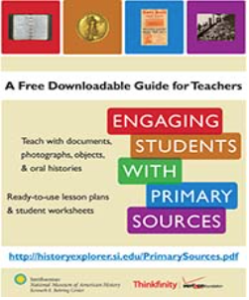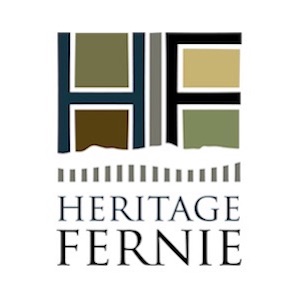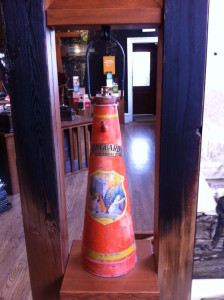Heritage Fernie offers a variety of curriculum coordinated programs for students from Grade 2 to 6, each 45 to 90 minutes long.
We also provide teachers with a number of in-class resources to use, from learning guides to objects from our Education Collection.
Don’t see some that meets your needs? We are happy to tailor a program to your classroom requirements.
Grades 2 to 3
TECHNOLOGY: THEN AND NOW | 1 HOUR
How did people listen to music in the 1920s? How did people send messages before email and text messages? What did they use to print letters with? This program explores and compares technology of old with the use of museum artefacts. Students have a chance to operate and test 1920s technology.The program is delivered at the museum. Students will be given a short introduction to each artefact and then have an opportunity for hands-on activities.
PROGRAM FEE | $20 per class (30 students and adult chaperones)
Grades 4 to 6
THIS IS OUR FERNIE WALKING TOUR | 90 MINUTES
On the surface, Fernie might seem like any mountain town: beautiful vistas, interesting shops, and accessible hiking and biking trails.
But if you dig a little deeper, you will discover a rich and dramatic history. During this 90 minute guided walking tour, students will explore the stories of movers and shakers, rumrunners, devastating fires, coal mining disasters and legends of a Ktunaxa curse and discover how these people and events have helped to shape Fernie as we see it today.
Tours are at a comfortable walking pace and make several stops. It is recommended that students wear comfortable walking shoes and bring a light jacket or sweater.
PROGRAM FEE | $20 per class (35 students and adult chaperones)
TECHNOLOGY: THEN AND NOW | 1 HOUR
How did people listen to music in the 1920s? How did people send messages before email and text messages? What did they use to print letters with? This program explores and compares technology of old with the use of museum artefacts. Students have a chance to operate and test 1920s technology.
The program is delivered at the museum. Students will be given a short introduction to each artefact and then have an opportunity for hands-on activities.
PROGRAM FEE | $20 per class (30 students and adult chaperones)
Teacher Resources
EDUCATION COLLECTION
The museum makes available to schools and community organizations the loan of objects from our community education collection free of charge. Objects in this collection do not have a documented provenance related to our mandate and are suitable for hands-on use and/or exhibition in a non-museum environment. Please contact our Program Coordinator to access items from this collection for classroom use by calling 250.423.7016, extension 3 or by email.
USING ARTIFACTS AND PRIMARY SOURCES IN THE CLASSROOM
Primary sources are the pieces of evidence that historians use to learn about people, events, and everyday life in the past. Students can use primary sources, too. By focusing on the resource itself —documents, objects, photographs, and oral histories—students can get a glimpse into the past beyond what a textbook can provide.
Object-based learning promote active, open-ended, student centred learning in the classroom as part of the general learning plan. Using real objects and other primary sources enhances understanding and develops analytical skills.
- They provide a direct link with a topic or ‘the past’ and can really enhance young people’s interest in and understanding of a topic/subject.
- They encourage learners to use all their senses – especially touch, sight and smell.
- They help to develop the important skill of drawing conclusions based on an examination of evidence, together with an understanding of the limitations and reliability of evidence.
- They are ideal for generating group and class discussion.
- They promote the value of museums and encourage young people to visit museums and galleries with their families to further their learning.
For practical advice of how to introduce object-based learning into your teaching, the following free online resources from the Smithsonian Institution will provide assistance.
- Engaging Students With Primary Sources
 | A guide for teachers, includes brief introductions to using documents, photographs, oral histories, and objects for classroom learning. The guide includes student handouts, sample lessons, recommendations for finding primary sources by type, and more support materials for teachers. Developed by the Smithsonian Institution.
| A guide for teachers, includes brief introductions to using documents, photographs, oral histories, and objects for classroom learning. The guide includes student handouts, sample lessons, recommendations for finding primary sources by type, and more support materials for teachers. Developed by the Smithsonian Institution. - Guide to Doing History With Objects | An essay written by Museum curators to introduce teachers to the variety of stories objects can tell. The site includes links to other resources for interpreting primary sources.
Booking A Program
How do I book a school program?
For all booking inquiries, please complete our Online Booking Request Form with your preferences for dates and times. For additional program information, please call Fernie Museum Visitor Services staff at 250.423.7016, extension 1, Monday to Friday, 10:00 am to 5:30 pm.
When should I book?
All programs, including teacher led programs, must be booked at least two weeks in advance. A confirmation letter and bookings agreement form will be emailed to the teacher. Please review your booking and email the signed bookings agreement form to [email protected]. Your booking will not be confirmed until we have received the signed bookings agreement form.
What do I need to book a school program?
Please have the following information ready at the time of booking:
- Title of program
- Preferred date(s) and time(s) – when planning the time required for a school program, add at least fifteen minutes for arrival and fifteen minutes for departure
- Grade, number of students, number of special needs students, number of adult supervisors, and any special requests.
- Payment can be made by cheque (payable to the Fernie & District Historical Society) the day of the program.
When should we arrive for our program?
Please arrive 15 minutes before your scheduled program. If delayed, contact 250.423.7016, ext 1 as soon as possible. If you arrive more than 30 minutes late, your program(s) will be cancelled unless we are notified in advanced.
How do I cancel or reschedule a program?
Any cancellations or changes to your booking(s) must be made through Visitor Services 250.423.7016, extension 1 – and confirmed in writing by the Fernie Museum at least two weeks prior to your arrival date.
How many students can participate in a program?
In order to ensure program quality, a maximum of 35 students per program is allowed. Please do not combine classes as it compromises the program quality
What should we bring to the museum?
Please bring lunch bags and necessary supplies only. If sketching or writing, please provide students with a hard surface to write on (journals, notebooks, pencils, etc). Pens are not allowed in the galleries. Backpacks must be left on the bus or at school.
Can we visit the museum without participating in a guided program?
Yes! We encourage educators to use the Fernie Museum’s permanent and temporary exhibits as an educational resource. There is no fee to access the Museum for a teacher-led visit or program. We do ask that teacher call and book the Museum to ensure that they have sole access to the museum galleries.
How many adult supervisors do we need?
We strongly request a ratio of one supervising adult to every five students. Participating teachers and adult supervisors are required to remain with their groups at all times. Additional adults accompanying the group are required to pay the adult group admission fee, except when required for special needs students.
What do I need to prepare before our visit?
Please discuss museum rules with your students and provide them with name tags. Museum Educators like to refer to students by their names! An Educator Welcome Package detailing these rules and a name tag template is available at http://dev.glenbow.org/programs/school/resources.cfm. Please copy these rules and distribute to your adult supervisors.
How do we pay?
Full payment for guided programs is due upon arrival. We currently accept cash and cheque.
Where can we eat lunch?
Groups may also eat lunch outdoors in the park next to the Fernie Heritage Library. The park has a number of picnic benches that can accommodate one class with adult chaperones.
How do we get to the Fernie Museum?
The Fernie Museum is located at 491 2nd Avenue.
Guidelines
It is essential that adult supervisors familiarize their group with proper museum conduct to ensure the safety of the displays and the comfort of other visitors. Fernie Museum visitors come from all around the world and are of all ages. All visitors appreciate the opportunity to view the museum’s collections in a safe, quiet environment, for this reason all visitors must follow the guidelines listed below.
Adult Supervision Requirements
A ratio of 1 adult supervisor for every 5 children/youths is required. One adult supervisor is required for every ten students aged 13 to 15 years and one adult supervisor is required for every fifteen students aged 16 to 18 years. Please divide your group into smaller sub-groups each with an adult supervisor. Please make sure your small group stays together at all times
General Program Guidelines
- No food and drinks in the museum please
- Respect other classes and visitors in the museum.
- Please use quiet, indoor voices.
- Please listen to Museum staff as they are providing your program. If students disrupt a program, they may be asked to leave the group with an adult supervisor.
These rules help make everybody’s visit an enjoyable experience and at the same time help protect the artifacts for future visitors.
Information Request
If you have questions about our education programs, would like to tailor one of our programs to fit your specific curriculum needs, or if you do not see a program to fit your needs, please contact the Museum to discuss.


